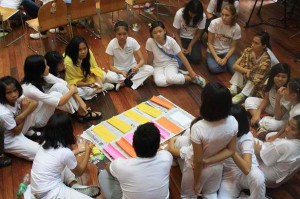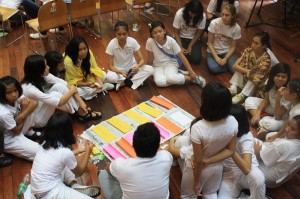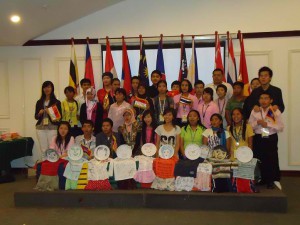IF numbers is a reflection of love, the Philippines should be a nation that loves children.
There are more than 31 million Filipino children, comprising 31percent of the country’s total population of over 101 million. But many of these children suffer violation of their rights.
Lunduyan executive director Nelia Sevidal said it is ironic that child protection is a right that is oftentimes overlooked in this country, which is a signatory to the United Nations Convention on the Rights of the Child.
“Children by virtue of their being vulnerable cannot protect themselves… adults can and should,” Sevidal said at a recent multi-sectoral workshop on child protection in Iloilo.
The event, attended by local media practitioners, members of the academe, nongovernment organizations (NGOs), and attached agencies, discussed children issues, such as child labor, child abuse in schools, and media reportage on children.
The participants expressed concern over the growing number of working children in the country, now numbering about four million. This includes 2.4 million child laborers, who are exposed to life-threatening work environments and risky situations, such as manufacturing plants and factories.
Statistics show most of the child laborers are between five to seventeen years old. They are engaged in mining, agriculture, fishing, construction, domestic labor and prostitution, which are considered as worst forms of child labor by the International Labor Organization (ILO).
“Children in prostitution and as victims of trafficking are just one of the few stories,” Jodelen Mitra, ILO program officer for monitoring and evaluation, said. “There are more stories to write about where children’s voices are unheard of.”
Sevidal meanwhile clarified the difference between child labor and child work, saying “the line has to be drawn (between the two).”
She said that what makes child work acceptable is the presence of four key elements, namely, survival, protection, participation and development.
“Child labor does not have those,” the Lunduyan official stressed.
Lunduyan, an NGO that works for the protection of children in difficult situations, sees the need to instill discipline and positive values in every facet of a child’s social life.
A child, as defined by the Council for the Welfare of Children (CWC), is anyone from zero to 17 years of age or below 18.
The Philippines needs to reduce the incidence of child labor by 75 percent by 2015 as part of the universal goal of its total elimination.
A National Statistics Office fact sheet showed at least two reasons why children worked or are forced to work: to help in own household enterprise and to supplement family income.
“In general, households with working children came from the rural areas with an average size of six members,” it said.
“Every child is our responsibility,” Denia Gamboa, head of CWC public affairs and communication office, said. “Bullying is one of the major problems encountered by schoolchildren.”
A baseline study conducted by the agency last year listed bullying as the most prevalent cause of child abuse in schools.
Seventeen-year-old Jesanny I. Yap from the University of San Agustin in Iloilo City said the slightest indication of bullying must be reported to school authorities.
She shared her sad experience as a student: “In one way or the other, I have been a victim of bullying. But I think I was able to rise above this adversity because I have a good support group and my school is against all kinds of child abuse.”
Carmencita Robles, a broadcast professor at the West Visayas State University, observed that the media is getting the flak for sometimes sensationalizing its reportage on children.
“There is a dearth of stories for and about children,” Robles said. “I think there’s just much violence contained in stories in the media that children are exposed to.”
Frank Rivera, executive director of the National Council for Children’s Television, said that scriptwriters are now more sensitive in tackling issues on children in their programs.
“We are keeping a close watch on television programs,” Rivera added. “We need to stress good viewing habits. Parents play a vital role in choosing what television programs are best for their kids.”
Daily Guardian publisher Lemuel Fernandez said children need to be shielded from senseless shows that do not promote proper values.
“As a media practitioner and a citizen of this country, there has to be a conscious effort on what children need to see or not to see,” he said.
Inquirer correspondent Nestor Burgos also admitted that media has its shortcomings when it comes to reporting on children.
“There are guidelines and laws in place to remind us that we need to be sensitive and sensible in our reportage,” he said. “Children should not be disadvantaged in any way.”



